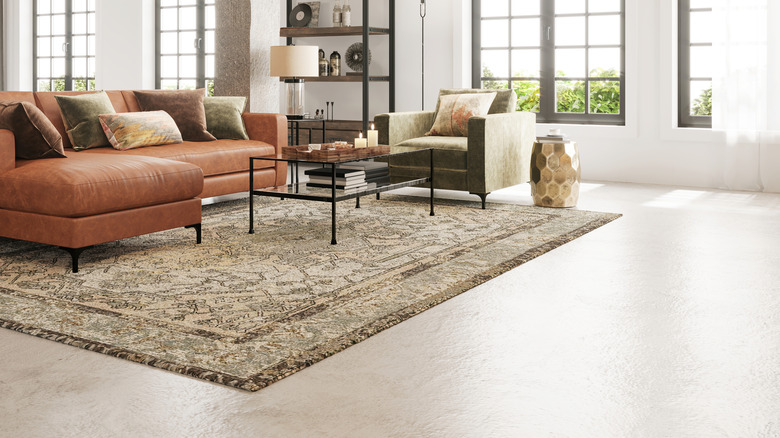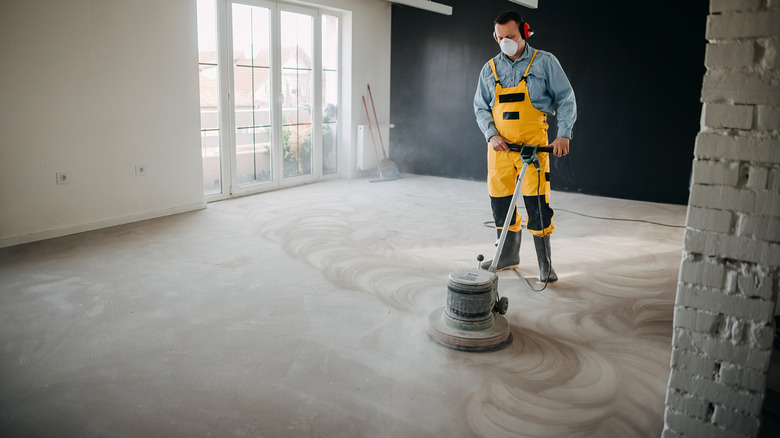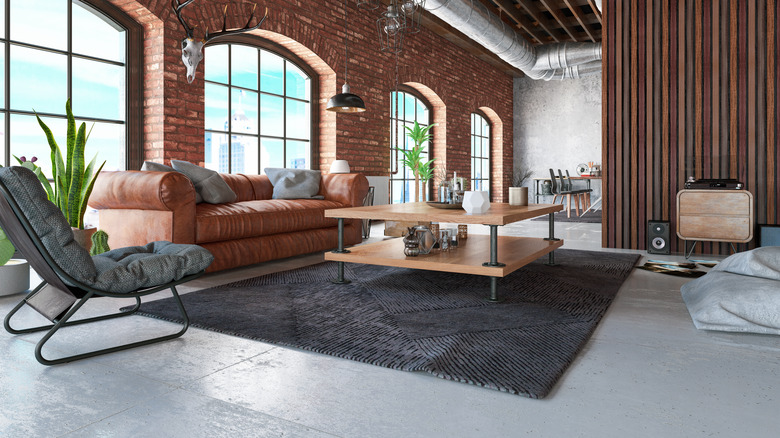What It Means When Your Concrete Floors Have A Burnished Finish
Burnished concrete floors are somewhat uncommon in homes, but that doesn't mean they aren't gaining popularity and sparking new ideas for many design-savvy residents. Perhaps you've heard a neighbor humbly brag about their beautiful new burnished concrete floors or looked into the idea for yourself when remodeling or designing a new home. You might have wondered what to consider before making the swap to concrete flooring – polished or burnished? Some people may conflate the terms for polished concrete with burnished concrete, but they are actually two different processes with separate results — albeit subtle ones. The process of burnishing concrete gives it a smooth, shiny finish that looks similar to polished concrete but requires less time, money, and effort.
Both polished and burnished concrete floors are popular choices for commercial buildings and modern, industrial interior design aesthetics, but what does it really mean to choose between these two finishing treatments? Here's how the process works, some of the different results that burnishing can produce, and the important pros and cons of burnished concrete floors.
How the burnishing process works
Burnishing is a finish applied to concrete floors after they have completely set and hardened. To apply a burnished finish, you need a special burnishing machine. A burnishing machine looks similar to a commercial floor polisher, but the buffing pad contains bits of embedded diamonds. Once thought to be the hardest material in the world, the diamonds carefully rub at the surface of the concrete at roughly 1,500 to 2,500 rotations per minute. As it's rotating and buffing, the burnishing machine heats and binds a wax-like coating into the pores of the concrete, giving it that shiny look and smooth feel. After burnishing, there are different types of sealants you can use on concrete floors.
Unlike polishers, burnishers won't actually grind much away from the surface of the concrete because they don't apply enough pressure. This is one of the reasons why the burnishing process is generally faster and more affordable. Polishing concrete requires more steps and a tougher machine to scrape off all of the imperfections in the concrete and make it appear shiny and flawless. While it can leave behind a smoother, more durable surface, polishing concrete floors is quite expensive and time-consuming, and it even presents some health concerns because the process churns up silica dust in the air.
Weighing the benefits of burnished floors
The biggest pro to burnished concrete is that it is more cost-effective than polished concrete. Polished concrete requires more expensive machinery, labor, and special safety measures to ensure that no one's health is put at risk from inhaling concrete dust. With burnished concrete, you can achieve a similar sleek and modern look without all the fuss and extra steps involved. To achieve the best, shiniest results, it's important to start with a clean concrete floor that has been swept, dusted, and wet-mopped prior to burnishing. After it's finished, a burnished concrete floor should be cleaned frequently to keep dirt, sand, and other abrasives from wearing at the surface.
However, if you're looking for that luxurious, glass-like finish, it may be worth it to go the extra mile and opt for polished concrete. Burnished concrete is still shiny, but the burnished coating diffuses light more, making it less reflective. Polished concrete is smoother, allowing it to reflect directly, almost like a mirror. Polished concrete is also more customizable, and the process can be adjusted to give the desired amount of sheen. Because the polishing process actually buffs and smooths the concrete, it will also remove most stains left behind from the construction process. With burnished floors, stains may still be visible underneath the final clear sealer.



